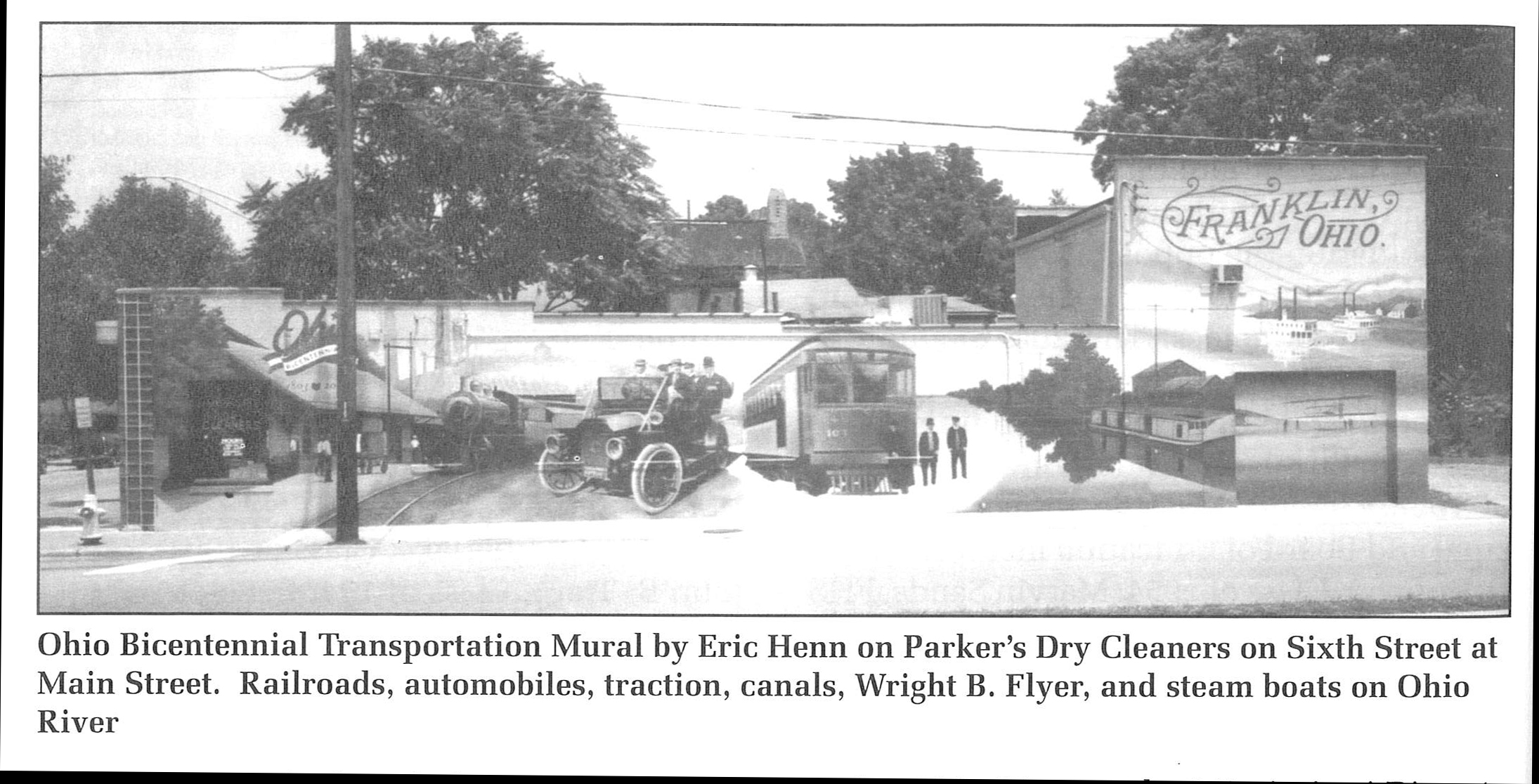
The Franklin-Springboro Public Library celebrates its 100-year Anniversary in 2023. Depending on when you start the timeline, a case could be made for the library being 190 years old. Editions of the Ohio Argus and Franklin Gazette reveal that at least as far back as 1833 there was a library in Franklin with E.P. Cole as librarian. Mr. Cole was principal of the Franklin Academy ten years later. The same newspaper reported in an 1835 issue that a Dr. Haggot had become librarian and advised that the library would be “open every Saturday, 9 a.m. – 5 p.m. and at no other time.”
The Franklin Library Association moved to Dr. Haggot’s office in 1837. This library association did not continue.
Since then, numerous libraries in Franklin had been established. Each was in operation for only a short time. With the existence of libraries at the time being sporadic, books were often soon scattered or lost.
It was not until the 1870s that a movement to establish a library on a permanent basis was started. Much of the credit has gone to a strong temperance movement and to the generosity of a public-spirited woman, Mrs. Ruth Schenck, whose home was in the brick house still standing at 219 Oxford Road, Franklin, Ohio.
A notice inserted in the Franklin Gazette, November 18, 1872, by William C. Reeder, pointed out to Franklin citizens that the library needed support and urged contributions for that purpose, but the appeal met with little response. The insert by Mr. Reeder read as follows:
“Our town is new in a prosperous condition, schools running smoothly, business lively, and yet our young men must stay at home evenings or pass their time loafing about saloons or groceries. All because our citizens have not established a public reading room and library. We believe the establishment of such an institution would do much to prevent drunkenness and debauchery, and while these were provoked, would do much toward furnishing valuable information; not otherwise to be acquired to our youth and even to all ages. The only objection against this project is that it will cost something. To be sure, it would; so do cigars, beer, and billiards cost something.”
By the 1870s the temperance movement was sweeping the country and the state of Ohio, building steam since the 1820s. By 1874, The temperance movement crusade had exploded over the city of Franklin, and sincere, devoted townswomen headed the fight to close the saloons, or, failing in that, to provide a good library as a means of keeping their men, young and old, off the streets and out of the saloons. Their prayer meetings held in the saloons did not make the saloon-keepers run for cover, but the library campaign was vigorously renewed and put into high gear.
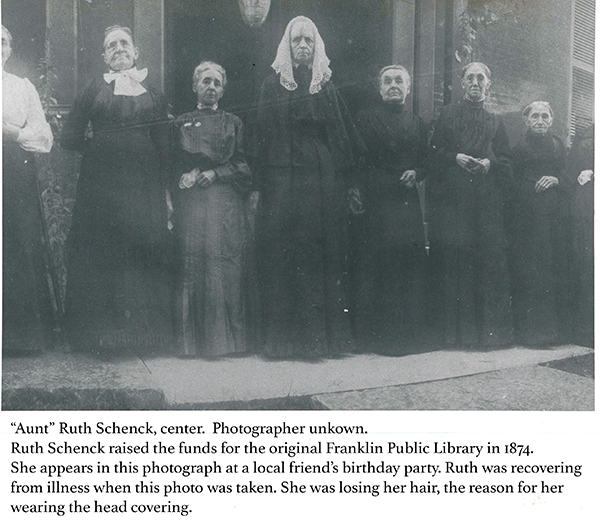
As a public library, Franklin’s library dates back to 1874 as a YMCA public library in the north two rooms on the second floor of the Odd Fellows Building (later known as the bank building) at the southeast corner of Fourth and Main Streets. The quarters were leased for 20 years with an annual rent of $100. The library was founded and supported by public subscription. Mrs. Ruth Schenck, known as “Aunt Ruth,” pledged to match citizens’ cash donations dollar for dollar. Before she was through her philanthropy had cost her $4,000. Her subsequent gifts brought her total contribution to $6,000. An additional $2,000 raised by the local community by popular subscription, provided the nucleus for Franklin’s library and the beginning of the present collection of material. Family memberships were sold for $3.00 a year and individual memberships for $1.00. With these funds, 1000 carefully selected volumes were purchased and $1000 was spent on equipment. The library was open until 9 p.m. at night.

An enthusiastic editorial appeared in the Franklin Advertiser on Saturday, November 14, 1874:
“Who would have thought six months ago that we would have in Franklin a free reading room, in which is one of the finest libraries found, outside of our larger cities? Yet such is the case. We have a library today of nine hundred and thirty-three volumes of good reading matter from juvenile up to the highest classes and scientific: including works by the popular writers of biography, history, travels, science, fiction, poetry, and a large collection of general literature. In addition to all these, there is also a good selection of the best magazines of the day, leading journals from all the principal cities and towns in the Union, representing more than fifty publishers, and including four dailies. With such a storehouse of knowledge so favorably and permanently established in our midst, can we not say that we are a favored community? Yet the crowning feature of all is to know that these books and papers are being eagerly sought after, and diligently read by many of our young people; and that the object sought to be obtained by the establishing of this library and reading room in our town, is being found. Every evening may be seen there, young men and boys, who before this opportunity was given them, spent this time in idleness upon the streets, and many ladies too, we are glad to say, find this a pleasant place to improve for a leisure hour. The Y.M.C.A., under whose management the rooms are, is maturing plans to have an excellent course of lectures and literary entertainments during the coming winter.”
A week later, however, the following item appeared in the local paper:
“Nightly a pack of unruly boys gather at the Library Hall door and render themselves a perfect nuisance by their noise and impudence when spoken to. We suppose if parents were to ask their good little boys if they were up there, they could not find one. They will wake up some Saturday morning to find their names in print.”
Mary M. Tibbals was the first paid librarian of the community. She took the mantle in 1875 and remained until 1881. The library went through a decline in local public interest during the years from 1881 – 1891. The librarian in 1881 was Miss Cornelia “Neal” Evans (later Mrs. William F. Schenck), and Miss Minnie Gugle (later Mrs. S. S. Tibbals) was librarian in 1891. During that decade Franklin’s population grew to almost 3,000. The library had over 2,000 volumes. Circulation was down to 200 persons in forty-one families.
The institution became a free school library supported by the Board of Education in 1894. Still located on the second floor of the Odd Fellows Building, the librarian, Miss Rachel Hartley, was paid $2.50 per week by the Board of Education. In 1912, when funds, when funds for purchasing books were low, the O.M.T. (“Our Mother Tongue”) Club gave a silver tea and raised over $300 for the library.
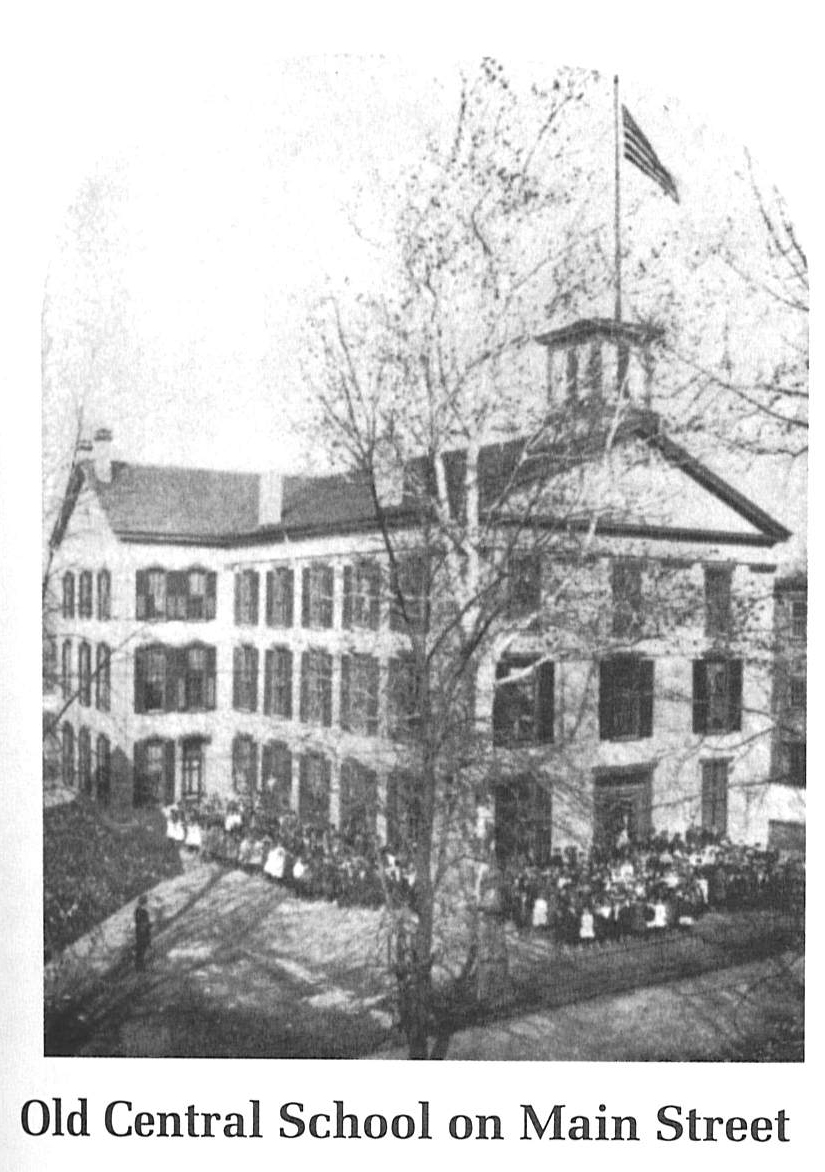
The modern history of the library began when it was moved to the second floor of the old Central School in 1922, with Miss Hartley at the helm. 1923 was the year the library became reorganized as a “School District Library”. A tax was levied by the Board of Education and became known as the Franklin Public Library, with its first Library Board of Trustees consisting of seven members. It was given complete jurisdiction over the library and its operation. Miss Nina Williams, Mrs. Laura Farrell, and Mrs. A. D. Eldridge, members of the original board, served for many years. Shortly after the death of Mrs. Eldridge in 1940, her daughter Lillian was appointed to fill the vacancy. In 1929, the library was relocated to the remodeled City Building on West Fourth Street. Once again it occupied the second floor of its building.
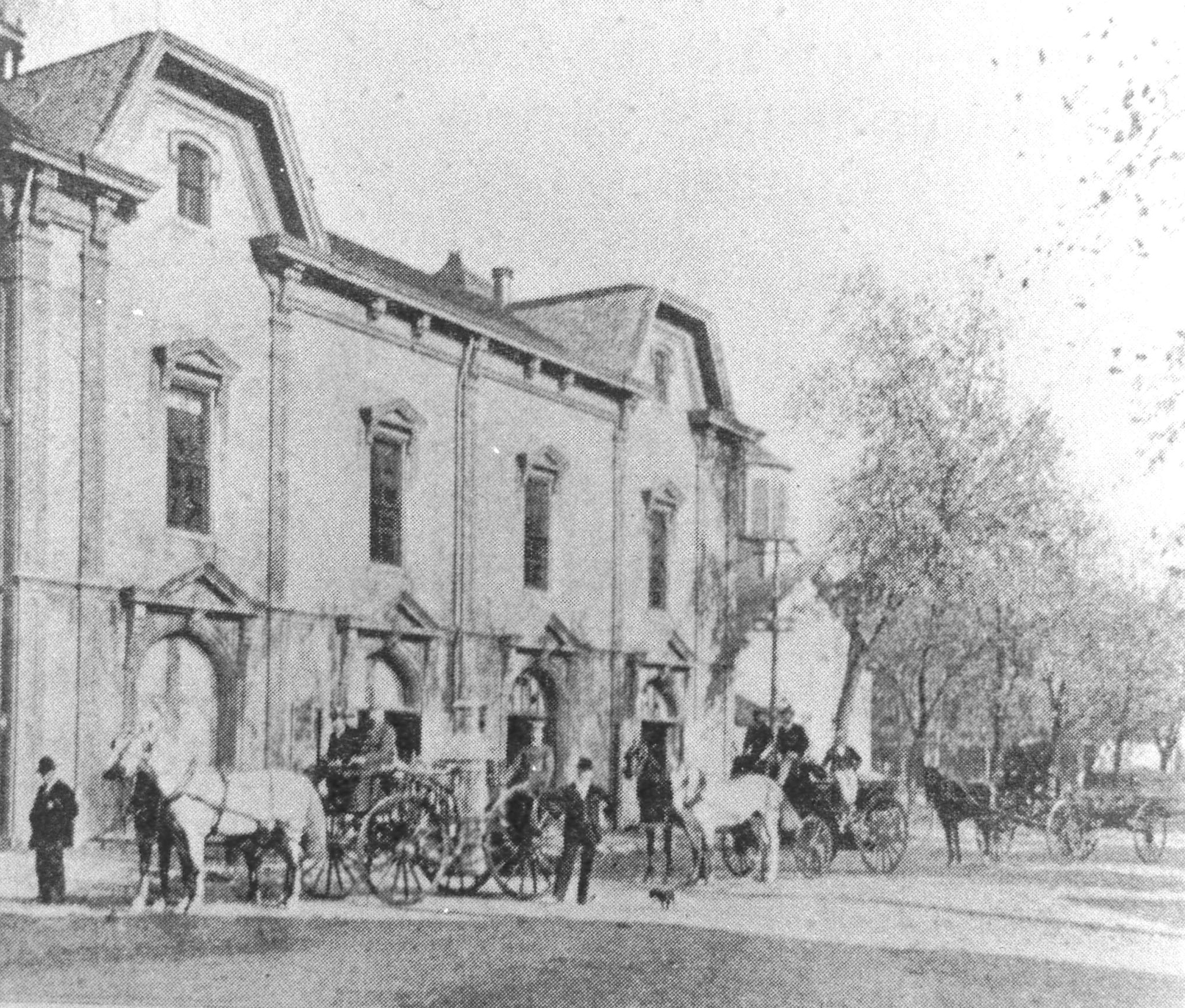
Planning for a new location began in 1948 under the guidance of library director Mabel Howie. In 1949, The Franklin Lions Club earmarked $10,000 for a new library building. Trustees of the library proposed a three-mil levy for two years and voters in the school district approved. In 1950, however, a ruling by the Ohio Supreme Court held the levy illegal after half of the amount anticipated had been collected. Not one individual in the school district requested the return of any of the funds collected. Two years later, Warren County turned over the $25,000 it had collected to the library board. Additional funds were made available at a special election in February, 1953, when local voters approved a one-mil levy by a four-to-one margin.
In 1954 the library moved to a new building on the southeast corner of Fourth and Anderson Streets, presently the location of the Franklin Police Station. The cost of the new building was $60,000- $70,000 and was six months in construction. Most of the new furniture was generously donated by various Franklin organizations and groups. The 1954 move from the City Building to the location on Anderson Street enlisted the help of local elementary school students. Carrying one stack of books at a time in a chain-like fashion, in alphabetical and numerical order, the fifth and sixth-grade students from Central School walked the distance between buildings. The books were able to be shelved as each of the students arrived to the new building. This method made it possible to transport the entire collection of 14,000 books, magazines, and pamphlets in record time with minimal confusion.

In August, 1961, while Robert Eshleman was library director, the trustees awarded the contract for the construction of a one-and-a-half story addition for book and periodical storage. Ground was broken in October and the addition of a 1 ½ -story 37’ x 19’ addition to the south end of the building was built, finished in June, 1962. In 1973 a children’s room was opened.
From 1932 to 1986, The Franklin Library, as well as others in the state, received its support from the intangible tax funds which made up the Library and the Local Government Support Fund. Beginning in January, 1986, a new law provided that the Library and Local Government Support Fund be supported by 6.3% of the state income tax. Since then the exact percentage has varied due to state-wide budgetary constraints.
The library’s annual budget request is filed with the county budget commission. Since 1982, the five libraries of Warren County have agreed on the amount that each library should receive. In the early 1990s, a funding formula was phased in to determine the amount of money each library would receive. This funding formula considers the population, circulation, materials collection, square footage, and hours of operation of each library.
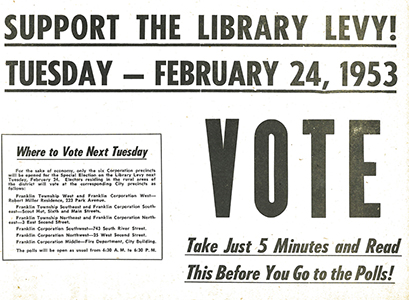
A $424,692 expansion was made to the 34-year-old Franklin Library building on Anderson and Fourth Streets in 1988. Most of the changes were to the interior, including a new arrangement of book shelves, new carpet, a new ceiling, and fresh paint.
At the rear of the old structure, the new addition featured a 1,500-square-foot mezzanine that included fiction books, a relaxation area, and study tables. A row of windows above the shelves allowed natural light to penetrate. The 3,500-square-foot addition to the first floor contains magazines, reference and nonfiction books, a computer area and new restrooms.
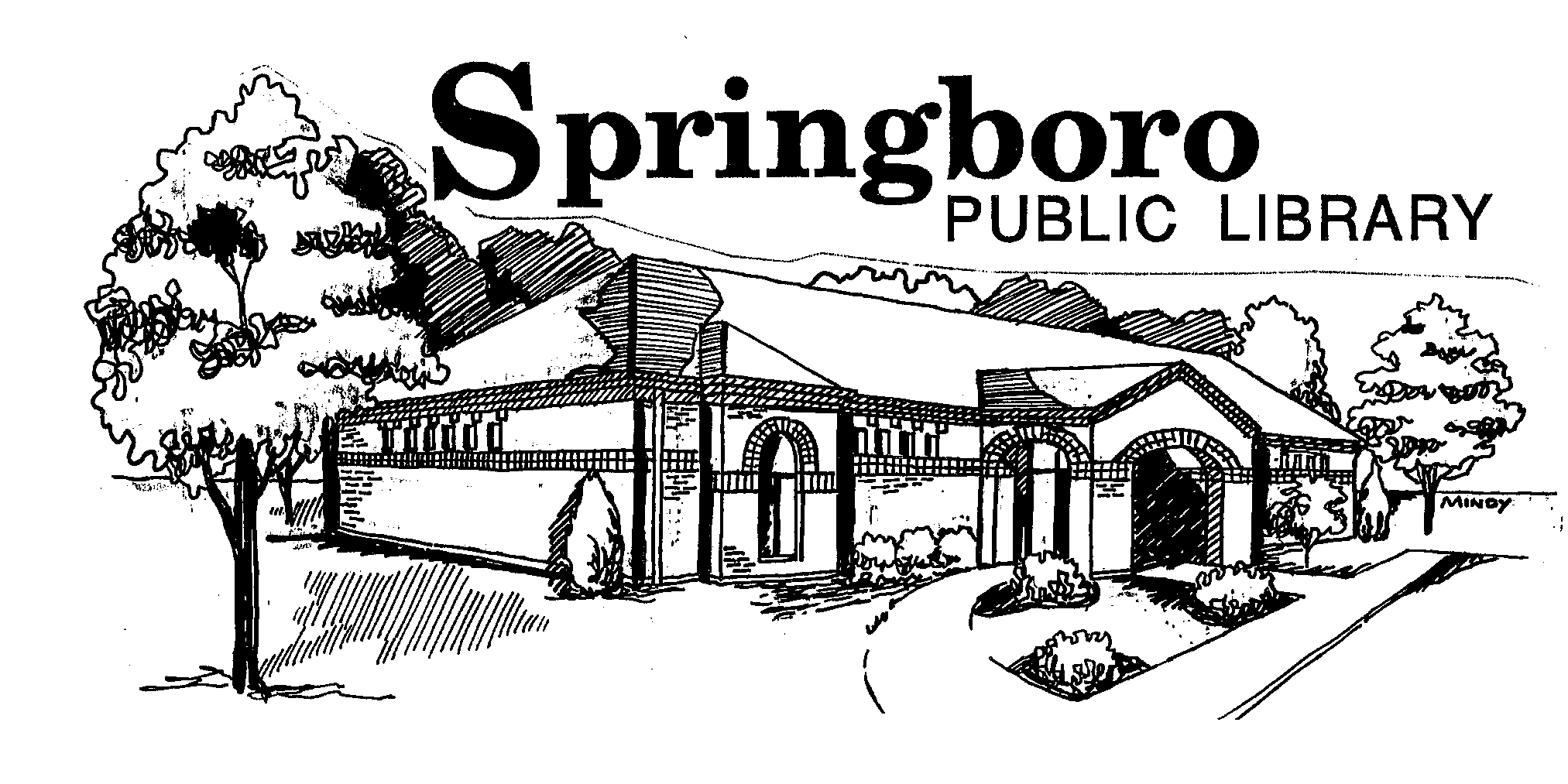
The planning of a new library branch began in 1987 under the leadership of then library director Mary Novak. Mary, known as the “The Builder”, a nickname given in admiration of her ability to tirelessly spearhead library construction projects with vigor and tenacity, ensured the new library would be an asset Springboro could be proud of for years to come. Mrs. Novak worked with the City of Springboro and the Board of Trustees to reach agreements regarding operating contracts, building agreements, and how the Springboro Branch Library would be managed.
In 1989, a contract was entered into with the City of Springboro to operate their library building as a branch of the Franklin Public Library. A portion of this library was funded by private contributions. The Springboro Branch Library was opened on January 2, 1990, with a collection of approximately 7,300 items. By 1995, over 37,000 items were circulating from that facility.
The Springboro Library was opened without a “card” catalog. When the library opened, it used Winnebago Software’s automated catalog and circulation system. In 1991, the Franklin Library also went on-line.
It was at this point the Franklin Library would become known as the Franklin-Springboro Public Library - a library system consisting of two branches. While technically, under the wording of the operational contracts, the library was referred to as the “Franklin Public Library” and the “Springboro Branch” of the Franklin Public Library, those in library would colloquially refer to the union of both of the branches as the “Franklin-Springboro Public Library”. The Franklin Library is now commonly referred to as the Franklin Branch, or the Franklin Branch Library, and the Springboro Branch, or the Springboro Branch Library.
